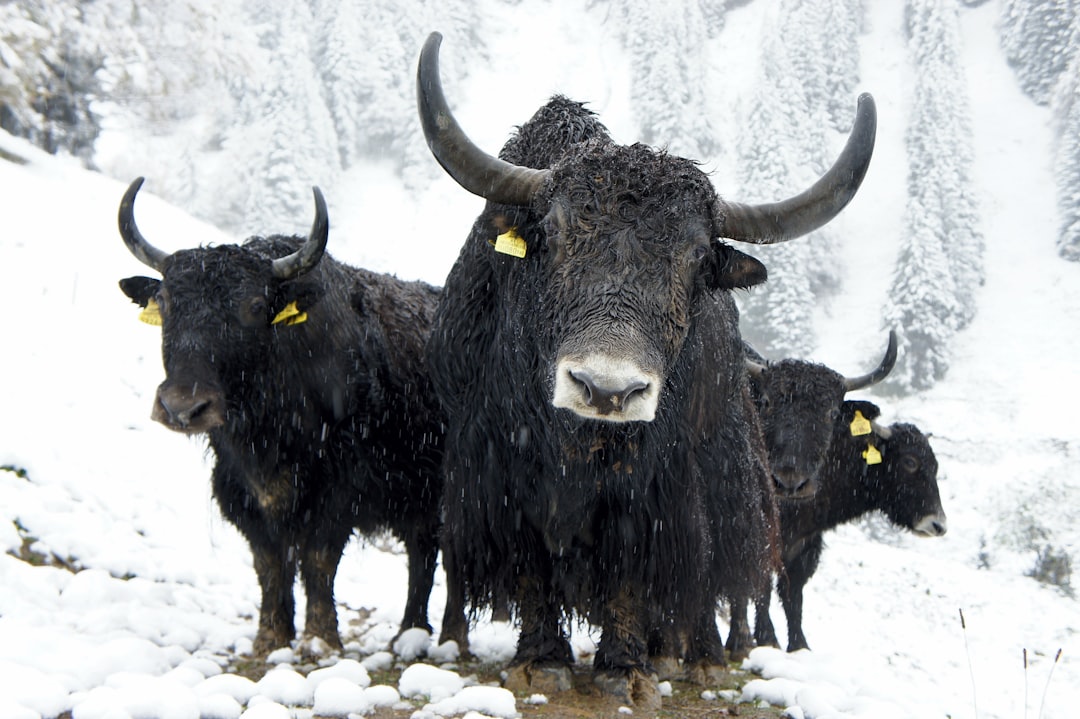Dairy cattle are raised across the globe, from the frigid landscapes of northern Europe to the sweltering tropics. Managing these animals in diverse climates presents unique challenges that require innovative solutions to maintain milk production and ensure animal welfare. This post explores the adaptations and management practices employed in hot, humid, and cold regions to optimize dairy farming.
Challenges in Diverse Climates
-
Hot and Humid Climates: High temperatures and humidity can cause heat stress in dairy cows, leading to reduced feed intake, lower milk yield, impaired reproductive performance, and increased susceptibility to health problems.
-
Cold Climates: Dairy cows can be sensitive to cold temperatures, especially unweaned calves, who have lower tolerance to weather extremes due to their low body size and are yet to develop rumens.
-
Variable Climates: In regions with distinct wet and dry seasons or unpredictable weather patterns, dairy farmers face challenges related to feed availability, disease prevalence, and water scarcity.
Adaptations in Hot and Humid Regions
-
Environmental Management:
-
Shade and Cooling: Providing shade through structures or trees is crucial for reducing radiant heat load. Cooling systems such as fans and sprinklers can further alleviate heat stress.
-
Ventilation: Ensuring adequate ventilation in barns helps dissipate heat and reduce humidity, creating a more comfortable environment for cows.
-
-
Nutritional Strategies:
-
Adjusted Feeding Times: Feeding cows during cooler times of the day (early morning or late evening) can encourage higher feed intake.
-
Diet Modification: Adjusting the diet to include more energy-dense feeds and supplemental nutrients can help compensate for reduced feed intake and maintain milk production.
-
-
Genetic Selection:
-
Heat-Tolerant Breeds: Selecting breeds known for their heat tolerance, such as the Jersey, can improve productivity in warm climates.
-
Crossbreeding: Crossbreeding with indigenous breeds adapted to local conditions can enhance resilience to heat stress.
-
Adaptations in Cold Regions
-
Shelter and Housing:
-
Barns and Windbreaks: Providing shelter from harsh wind and rain is essential for maintaining cow comfort and preventing cold stress.
-
Insulation: Insulating barns and providing bedding can help retain heat and protect cows from extreme cold.
-
-
Nutritional Strategies:
-
Increased Feed Intake: Cows require more energy to maintain body temperature in cold weather. Providing high-quality hay and other feeds can meet these increased energy needs.
-
Water Management: Ensuring access to unfrozen water is crucial, as dehydration can exacerbate cold stress.
-
-
Physiological Adaptations:
-
Thickening of the Coat: Cows grow a thick winter coat, with dense underfur that traps heat and longer guard hairs to protect against wind and moisture. This helps keep them warm even on the coldest days.
-
Increased Metabolic Rates: Cows experience increased metabolic rates to produce more body heat. This increase in body heat helps keep them warm and is made possible by the farmer feeding larger quantities during the cold season.
-
Innovations in Milk Production
-
Precision Livestock Farming: Utilizing sensors, wearables, and data analytics to monitor cow health and behavior in real-time, allowing for timely interventions and optimized management practices.
-
Climate-Resilient Feeding Systems: Developing feeding systems that utilize locally available and climate-resilient feed resources, such as drought-resistant forages.
-
Improved Housing Designs: Constructing climate-controlled barns that provide optimal environmental conditions for dairy cows, regardless of external weather conditions.
Conclusion
Dairy cattle management in diverse climates requires a multifaceted approach that combines environmental management, nutritional strategies, genetic selection, and innovative technologies. By understanding the specific challenges posed by different climates and implementing appropriate adaptations, dairy farmers can maintain milk production, ensure animal welfare, and promote sustainable dairy farming practices worldwide. As climate change continues to impact agricultural systems, ongoing research and innovation will be essential for adapting dairy farming to an increasingly variable and challenging environment.
Citations:
- https://sjsr.scione.com/cms/fulltext.php?id=95
- https://www.dairyproducer.com/managing-and-feeding-lactating-dairy-cows-in-hot-weather/
- https://walkerfarms.ca/blog/the-winter-routine-how-a2-protein-cows-adapt-to-cold-weather/
- https://practicaldairytrainingcentre.com/how-to-manage-dairy-cows-a-guide-to-managing-your-dairy-herd/
- https://www.veterinaryworld.org/Vol.16/May-2023/24.pdf
- https://www.dairy.com.au/dairy-matters/you-ask-we-answer/how-much-shelter-from-cold-does-a-dairy-cow-need
- https://openknowledge.fao.org/server/api/core/bitstreams/8749a956-0725-414f-8c35-58a5db0c2b5c/content
- https://www.mdpi.com/2076-2615/7/5/37
- http://chautauqua.cce.cornell.edu/news/are-those-cows-cold-1

Comments
No comments yet. Be the first to comment!
You must be logged in to comment. Login